Reasons for the failure: Soviet designs for extra-large caliber guns
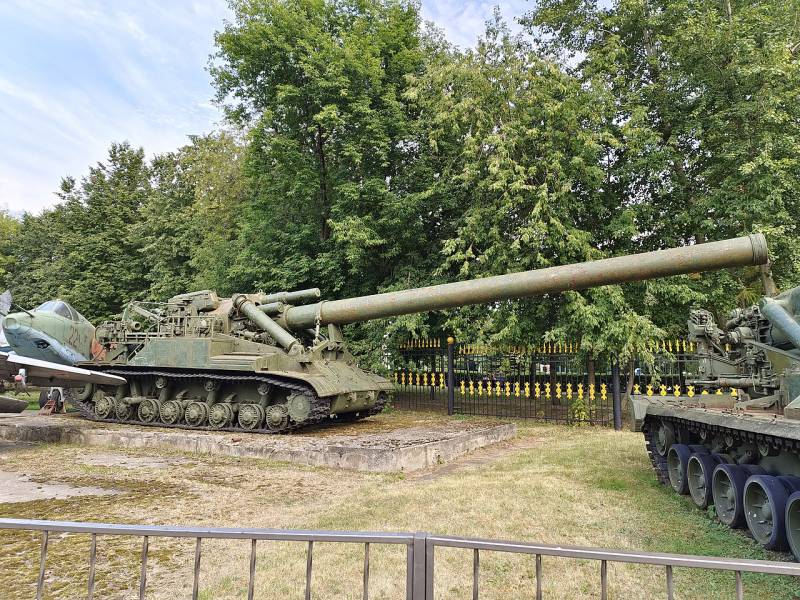
The surviving prototype of the 2A3 "Kondensator-2P" self-propelled gun. Photo by Wikimedia Commons
For a long time, one of the main ways to improve the tactical and technical characteristics of an artillery gun was to increase its caliber to use larger and heavier projectiles. In the middle of the XX century. this concept has led to a number of unique extra-large caliber systems with special characteristics. A number of such projects were created in our country, but all of them were not developed due to objective limitations and shortcomings.
Cannon and mortar
In the mid-fifties, the Soviet army came to the conclusion that it was necessary to create new high-power guns with an extra-large caliber. The accumulated experience showed that the systems of the main calibers do not always cope with the destruction of enemy fortifications, and also have limitations on the firing range. Increasing the caliber to values uncharacteristic of ground artillery made it possible to solve these problems. In addition, it became possible to create and introduce special shells with a nuclear warhead.
In November 1955, a decree was signed by the USSR Council of Ministers on the development of two new artillery systems of special power - a cannon and a self-propelled mortar. The 406 mm caliber gun received the index 2A3 and the code "Condenser-2P", and the mortar was designated as 2B1 "Oka". The development of the chassis for two products was entrusted to the Leningrad Kirov Plant. The artillery unit of the 2A3 self-propelled guns was created by the Leningrad TsKB-34 (now the Special Engineering Design Bureau), and the 2B1 mortar was designed by the Kolomna Design Bureau of Mechanical Engineering (now the KBM).
In 1957, LKZ, with the participation of other enterprises, built four experimental machines of each type. Soon they entered the field tests, and on November 7, the experimental products "Condenser-2P" and "Oka" were included in the mechanized column of the parade on Red Square.
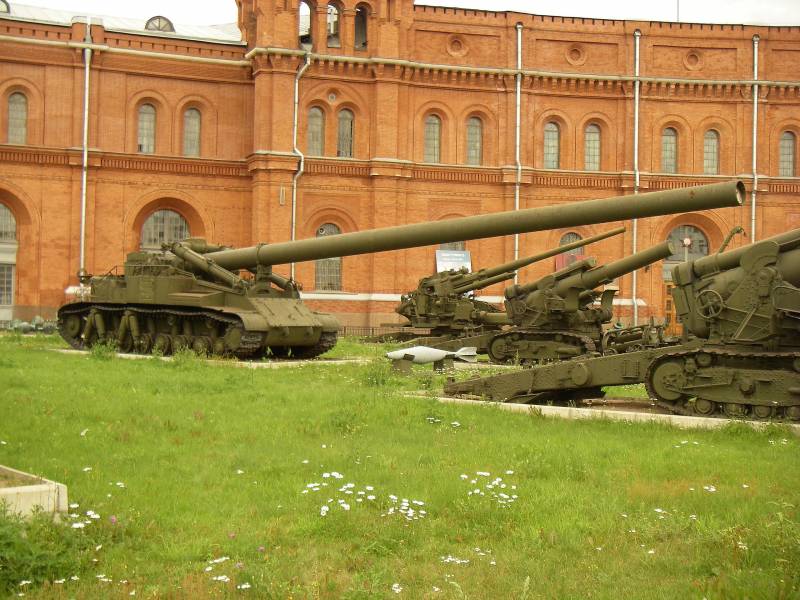
Experienced mortar 2B1 "Oka". Photo by Wikimedia Commons
During the tests, self-propelled guns confirmed the main firing characteristics, but showed limited running capabilities, low reliability, etc. For several years, fine-tuning and testing of structures continued, and most of the problems were solved. During the testing period, the 2A3 and 2B1 products were involved in army exercises to test new tactics.
However, over the course of several years, the command managed to become disillusioned with the concept of super-large-caliber "nuclear" weapons. In 1960, work on both projects was stopped due to lack of prospects. In the future, the bulk of unnecessary prototypes were dismantled, but one car was saved for museums.
Technical features
2A3 "Condenser-2P" and 2B1 "Oka" differed in armament, but used a common architecture. Both machines were built on the basis of a tracked chassis, on which a swinging artillery unit and related units were mounted. In the stowed position, self-propelled guns had a length of approx. 20 m, due to the design of weapons. The combat weight of the "Condenser" reached 64 tons, while the "Oka" weighed only 55 tons. Both samples were served by a crew of 7 people and needed the help of an ammunition transporter.
The 2A3 product was built on the Object 271 chassis, and the unified Object 2 was used in the 1B273 project. Both chassis were built on the basis of a heavy tank T-10M with the preservation of part of the structures of the hull, power plant and chassis. The chassis was equipped with V-12-6B diesel engines with a power of 750 hp. and mechanical transmission. Chassis had eight road wheels on board. Suspension - individual on beam torsion bars with additional shock absorbers on part of the balancers. The speed on the highway did not exceed 30 km / h.
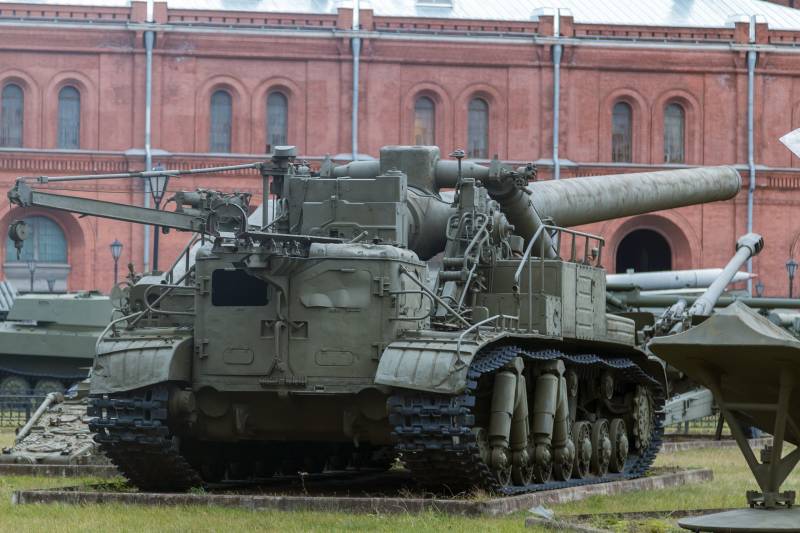
In the stowed position, "Oka" and "Condenser" lowered the barrel back. Photo by Wikimedia Commons
In the center of the hull of both chassis, a place was provided for mounting an artillery mount. The 2A3 self-propelled guns received a specially designed 406-mm SM-54 gun with a rifled barrel 31,4 klb long. It used separate loading shots with a propellant charge in the cap. The supply of ammunition to the breech was carried out using a special crane. At the same time, preparation for the shot took several minutes.
The SM-54 gun used several types of 406-mm projectiles. Depending on the task, it was proposed to use high-explosive, concrete-piercing or nuclear. The mass of shells reached 570 kg. The maximum firing range with a full charge is 25,6 km.
The gun mount, on which the barrel was mounted, had recoil devices and hydraulic vertical guidance drives. There were no means for horizontal guidance - this task was solved by turning the entire machine. On board the self-propelled guns there were several sights for direct fire and from closed positions.
The 2B1 self-propelled gun based on the "Object 273" received an artillery system of a different design based on the 2B2 mortar. It was a smooth-bore breech-loading gun of 420 mm caliber with a barrel length of 47,5 klb. The barrel was placed on a support-frame with the ability to move in a vertical plane. For reloading and in the stowed position, the mortar descended at a small angle. Before shooting - rose back.
The design of the installation provided firing with elevation angles from + 50 ° to + 75 °. As in the case of the "Condenser", "Oka" did not have horizontal aiming devices - this function was performed by the chassis. In addition, the mortar did not have a base plate, and the entire recoil momentum was transmitted to the ground through a chassis with reinforced suspension.
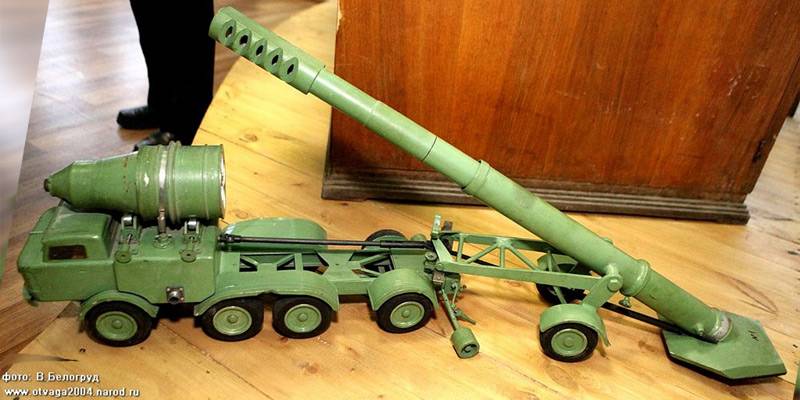
Model of the D-80 gun based on a semi-trailer. Photo Ovaga2004.narod.ru
For the 2B2 product, special 420-mm mines with a high-explosive and special charge were developed. The reloading of the mine from the carrier was carried out by a regular crane. It took approx. 5 minutes. Firing range - from 800 m to 45 km.
Project D-80
Despite the failure of projects 2A3 and 2B1, the theoretical study of the topic of extra-large caliber continued. In the first half of the sixties, the Design Bureau of the Sverdlovsk Plant No. 9 proposed an original design for the 535-mm D-80 gun. In addition, we worked out the possibility of installing such a product on a wheeled semi-trailer and tracked chassis of various types.
Work on the D-80 continued for some time and gave a very interesting result. In theory, such a weapon in terms of firing range and projectile power could compete with early tactical missile systems. However, by the mid-sixties, the missiles had noticeably improved their performance, and cannon artillery was hopelessly behind them. The D-80 project was sent to the archive as unnecessary.
The D-80 project proposed the manufacture of a 535-mm rifled gun with a medium-length barrel. A multi-chamber muzzle brake was provided on the barrel. The gun was proposed to be mounted on a semi-trailer with a base plate. The later version of the project called for the creation of a kind of mortar with a barrel length of 15 klb and a muzzle brake in the form of a set of holes in the walls of the barrel. It was planned to put such a mortar on a tracked chassis. The barrel was fixed on the machine with a frame and a hemispherical plate. The latter provided the connection between the gun and the body of the carrier, and also served as a shutter.
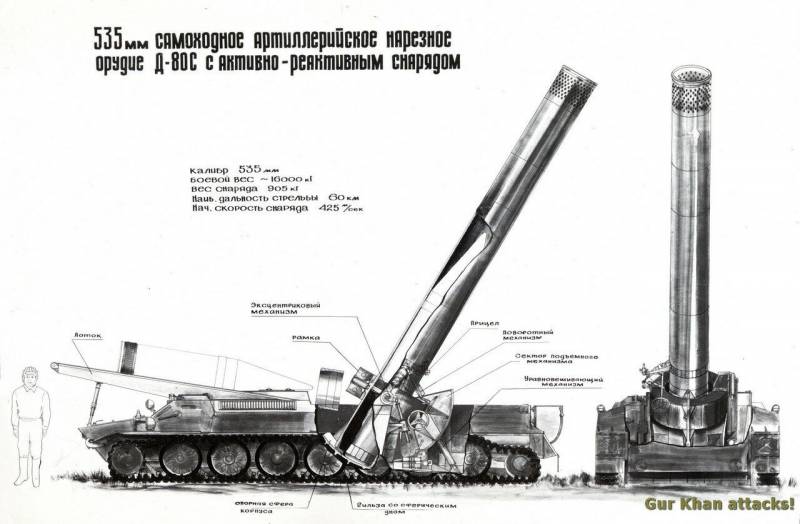
D-80 in the form of a mortar on a modified MT-LB vehicle. Graphics Gurkhan.blogspot.ru
For the D-80, they developed original active-rocket projectiles of 535 mm caliber. They were up to. 4 m and weight up to 905 kg. A propellant charge was attached to the projectile in a sleeve of the appropriate size. The sleeve for the late "mortar" was distinguished by a curved bottom shape - to interact with a hemispherical shutter. The projectile could carry 420 kg of explosive or a special high-power charge. It was also equipped with a solid propellant engine. The initial speed of the projectile, according to calculations, was to reach 425 m / s, the range - up to 60 km.
Due to excessive technical courage, lack of advantages over missiles, etc. the D-80 project and its versions were not developed. Three variants of self-propelled guns with such a gun were made only in the form of mock-ups.
Common problems
Interesting and ambitious guns of super-large calibers SM-54 / 2A3, 2B2 / 2B1 and D-80 did not suit the customer, as a result of which they did not receive development and did not reach the service in the army. The maximum calibers in our ground artillery remained 152 and 203 mm. The reasons for the refusal to further increase the calibers of guns and mortars were quite simple - these products had a number of disadvantages, and their advantages were not decisive.
One of the main problems of unusual self-propelled guns was excessive technical complexity and high cost. First of all, this concerned the development and production of barrels of large caliber and length, capable of withstanding design loads. Serial production of such products and self-propelled guns as a whole would be unacceptably expensive and slow for a full-fledged re-equipment of artillery units of special power.
Finished samples were difficult to operate. For example, the large overhang of the Oka or Capacitor barrel in the stowed position limited the overall maneuverability of the combat vehicle and even led to the risk of damage. In addition, the reliability of the design left much to be desired. So, at the 2A3 "Condenser-2P" gun, during tests, internal units and the chassis broke from excessive recoil.
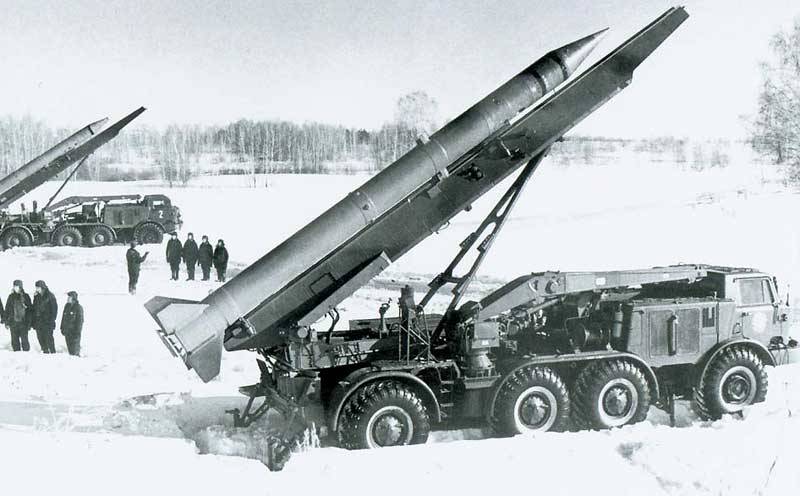
Complexes 9K52 "Luna" are the progenitors of modern Iskanders. Photo Missilery.info
With all this, ultra-large caliber guns faced competition in the form of missiles that already showed similar or higher performance. So, the tactical complex 9K52 "Luna" with the help of missiles of the 9M21 series could attack targets at a distance of up to 70 km. The unguided rocket had limited accuracy, but delivered warheads weighing 200 kg to the target. Thus, in terms of firing range and operational characteristics, the Luna complex was superior to the 2B2 and D-80 mortars.
In the early sixties, it was clear that new fuel dispensers with improved characteristics would soon appear. They will once again bypass cannon artillery in terms of firing range, and will also show improved accuracy and will be able to carry heavier warheads. With the beginning of the development of new fuel dispensers, such as the future Tochka, the meaning of the existence of the Oka or the Capacitor completely disappeared.
Useful experience
Thus, in the fifties and sixties, the Soviet defense industry found and studied the limits of the development of self-propelled ground artillery. At the level of theory and practice, it was possible to reach calibers of 406, 420 and 535 mm and obtain the maximum possible characteristics for barrel systems of that time.
However, the resulting artillery systems for the ground forces had not only advantages, but also disadvantages. Their further development was considered unpromising and inexpedient. In this regard, it was decided to continue the development of new missile systems that had already shown their capabilities and had much greater potential. As shown by subsequent events, the consequences of which are observed even now, the army made the right choice.
Information